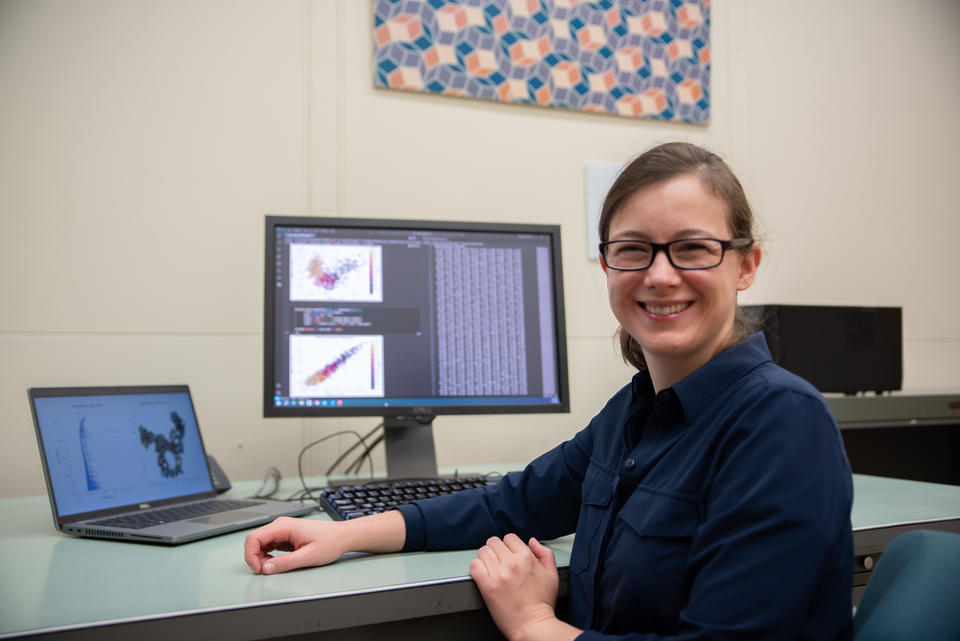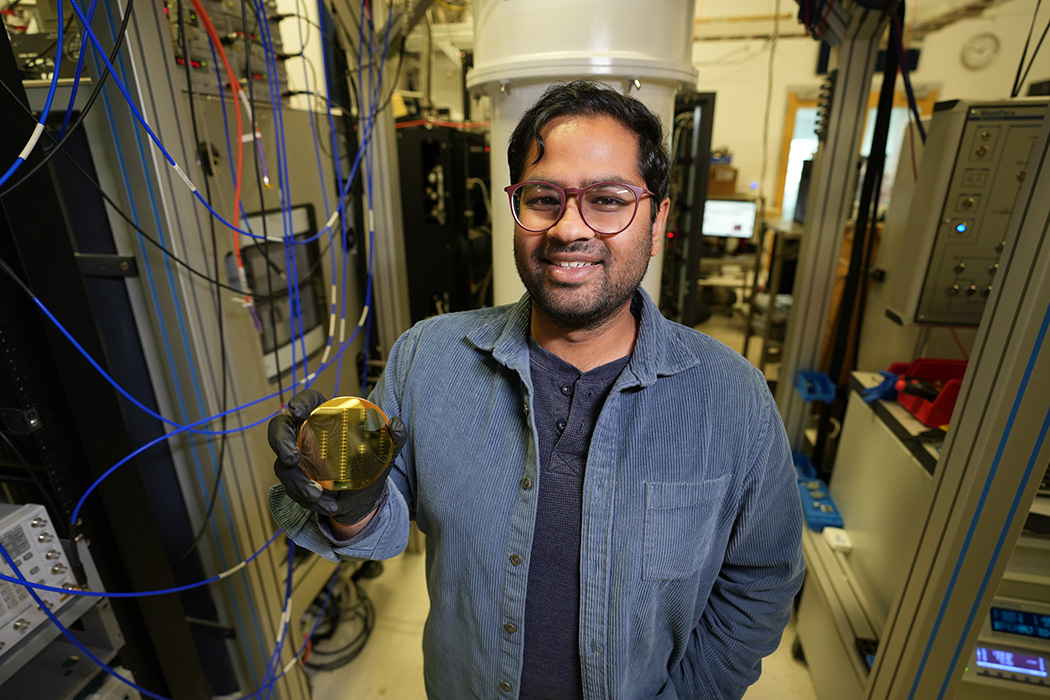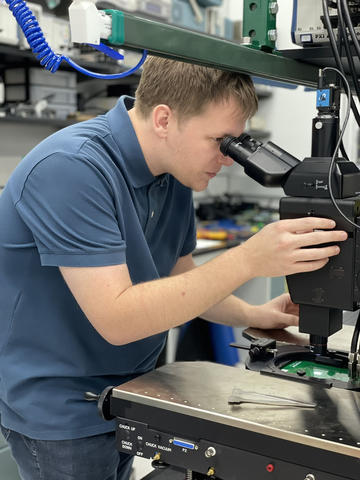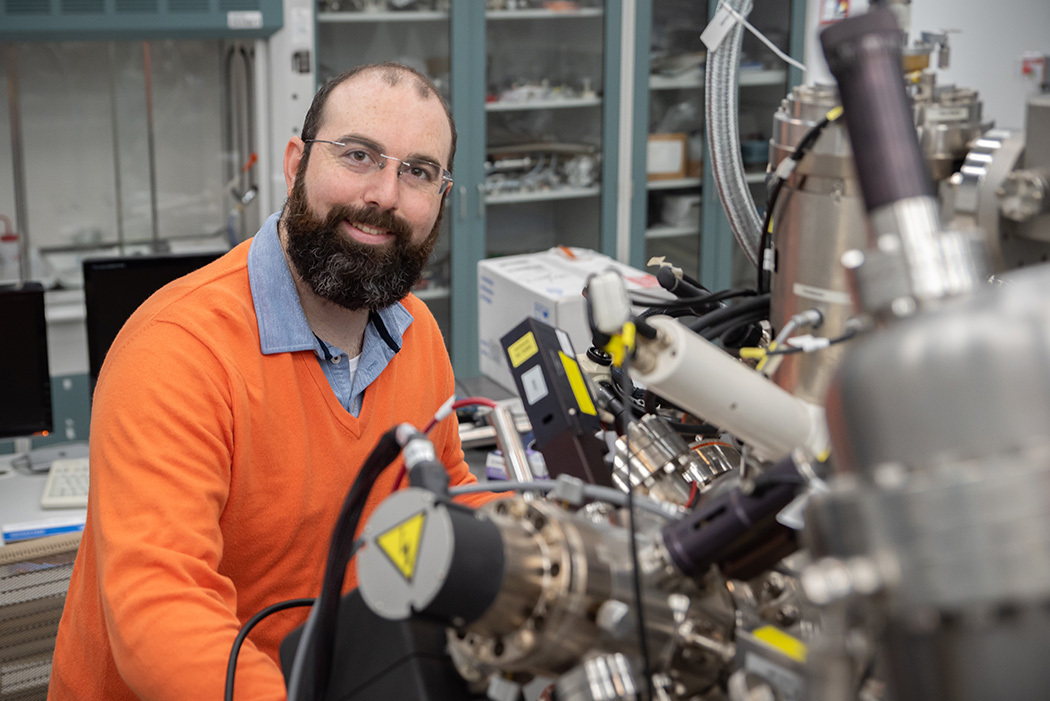Taking Measure
Just a Standard Blog
From Diamonds in Your Computer to Safer Medications, NIST Researchers Look at What’s Next for 2024 and Beyond

Melinda Kleczynski is measuring tiny parts of antibodies to help promote safety and innovation in drug development.
We asked some of NIST’s postdoctoral researchers — early career staff who have recently completed their Ph.D.s — for their thoughts on questions looking to 2024 and beyond, including:
- “How will the work you’re doing today affect society in the years to come?”
- “What changes or advancements in your field are you most excited about for 2024 and beyond?”
Here are their thoughts and predictions.
Math Will Help Us Make Better Medications — Melinda Kleczynski
Antibodies are a major part of the body’s immune defense. When you get a vaccine, your body develops antibodies to fight an illness, such as COVID-19 or the flu.
These large biomolecules have specific structures that determine their function. Antibodies look and work differently based on their jobs in our bodies. They may also move or change form, like a piece of modular furniture with different assembly options.
My colleagues and I are working to help the biomedical community understand the full range of shapes and movements an antibody can have. Though you already have antibodies in your body, we’re working with a family of artificial antibodies that can be introduced into the body through injected medication, known as monoclonal antibodies.
Along with Anthony Kearsley, I am using advanced mathematical techniques to measure small parts of the antibody, known as domains, so we can better understand antibodies. In some cases, domains have a donut-like shape with a hole in the middle, and we need to measure the empty region at the center.
I am lucky to be working with chemist Christina Bergonzo, who creates simulations of different possible shapes of antibodies to help advance medical research. We can see structural changes that occur during these simulations.
We also need to know how likely an antibody is to take a certain shape or form. After calculating the variability of an antibody over the course of a simulation, we can then search for different configurations across many antibodies and determine how common they are.
Understanding whether a variation is rare or common affects how useful it might be in medical treatment. We’re doing this because variability in the shape of a domain affects how antibody-based medications, such as cancer therapies, work in our bodies.
I’m excited to see how our research helps promote a better understanding of the changing structure of antibodies. We hope our work will promote safety and innovation in future drug development.
Quantum Developments Could Make Our Devices Better and Safer — Akash Dixit

In all honesty, I don’t know how our research building quantum computers will affect society in the future. That’s the beauty of science!
Put simply, quantum computing uses the properties of quantum physics to do different things than traditional computers. Quantum computers can use quantum bits, known as “qubits,” to enable new types of computation, communication and encryption. I would not be surprised if our work ended up having applications in something I have not even thought about.
In the near future, I’m excited by all the ways quantum technology will be used in fields for which it was not originally developed. For example, in addition to building quantum computers, the same quantum technology is being used to search the cosmos for invisible “dark” matter, measure gravitational waves and develop better space-based cameras for studying the early universe.
Computer Chips Will Become AI-Ready — William “Drew” Borders

My work involves finding ways to make computers more efficient, and this is especially important now that artificial intelligence (AI) is becoming more common. Our brains are incredibly efficient, much more so than computers. I am working on a project that demonstrates how you can train a computer chip to work like a neural network in the brain to improve computers’ energy usage.
Your computer has RAM for short-term tasks and a different type of memory for long-term storage for tasks, such as storing your files. AI operations in conventional computers consume a lot of power because they must shuttle information between the processing part of the chip and memory. If you’ve ever asked a generative AI tool a question, you may notice it can take time to get an answer; all that shuttling of information back and forth takes power.
Our research shows that you can process AI operations on the memory of the chip itself, without information having to move to different locations, which uses up a lot of electricity.
We are researching how a novel device, known as a magnetic tunnel junction, can help demonstrate the effectiveness of new computing approaches that can keep up with the requirements of AI by allowing computer memory to operate on data like a neural network. Using these magnetic devices, which don’t require as much power, computer memory can become more energy efficient when operating on AI data.
If chips can operate more efficiently, you potentially widen their uses in things such as critical space applications. In space, extreme temperatures, radiation and electromagnetic fields could all but destroy a regular chip.
Some trends in this field that I’m excited about deal with the scale of these networks using novel devices. We have a chip with 20,000 memory elements. Typical conventional computers have millions to billions of memory elements and are capable of computing at a much larger scale. So, we have to continue researching and learning how we might “scale up” this technology to make more computers energy efficient.
It’s important for many reasons to show how viable these ideas are. Many researchers here at NIST and other labs are starting to create larger and larger sized chips with these novel memory elements, demonstrating interest and effort in the potential that they bring.
Could Silicon Valley Become Diamond Valley? — Trey Diulus

During the pandemic, the public learned more about computer chips and how challenging they are to manufacture. Cars and other consumer items became harder to buy and more expensive during that time as global supply chains were stressed.
Most computer chips in our phones, cars and other things we use every day are made of silicon (hence the term “Silicon Valley”). Typically, silicon devices can still work at around 100 degrees Celsius (215 degrees Fahrenheit). Unfortunately, energy efficiency in silicon begins to drop substantially at as low as 50 degrees Celsius (or about 130 degrees Fahrenheit). You may have noticed a less extreme version of this if your laptop gets hot, and then the battery dies shortly after. It may not seem like computer chips should need to function at such high temperatures. But in cars, for example, it gets very hot near the engine where electronics are positioned.
As the U.S. works to improve domestic production of computer chips, my research group is learning more about alternative materials to silicon for semiconductor devices, such as the transistors inside of cars or the drills on oil rigs.
Many scientists believe one solution is to improve the material design of our transistors, most notably with lab-grown diamond as a substitute for silicon. Unfortunately, making electronic devices with diamond is challenging for a few reasons. You need to make high-quality, large pieces of artificial diamond. You also need to treat the material for device applications, which is different from how diamonds are treated to become jewelry. In electronics, this process requires you to expose the artificial diamond to a high-energy hydrogen plasma that sticks hydrogen atoms on the diamond’s surface.
Our lab is currently researching ways to treat diamonds using standard lab equipment that most universities and research facilities can access, instead of the current standard of purchasing expensive treated diamond samples from companies. In this case, our first goal is to provide labs that otherwise wouldn’t be able to buy these expensive samples with a way to prepare their own samples.
With freshly treated diamonds in our lab, our next goal is to design the next generation of diamond devices that can be used in real-life industrial applications.
I’m most excited about having reliable electronic devices that will not break down at the temperatures that silicon does. Another advantage of this approach is that these diamonds are completely transparent like a piece of glass. So, you can imagine we are coming close to the sci-fi fantasy of having clear touch-screen windows on our cars or similar applications. It’s still not quite ready for 2024, but there are promising designs for future technology.
Related Posts
Comments
Your ability to convert from F to C is poor at best! 100C is exactly 212F (you know the boiling point of water) 50C equals 122F not 130F. The logic of the rest of the paragraph is in doubt. I have seen integrated circuits get hot and they work poorly or not at all, as I read the paragraph integrated circuits work better at boiling.
I think it's great that the United States is growing/expanding domestic output of critical pieces of hardware, such as CPUs. This is a trend that will have a dramatic impact on computers going forward. Thank you for the overview of 2024.
Perhaps incorporating photonic circuitry and processors in critical areas, would resolve the problem of heat...





Do nano size plastic particles pose a health risk to ubiquitous life forms, including humans?Z